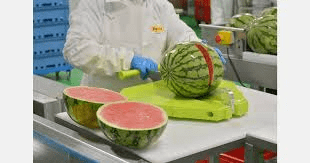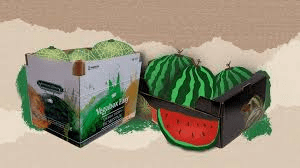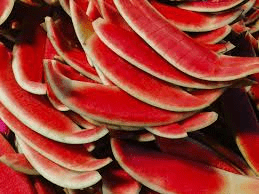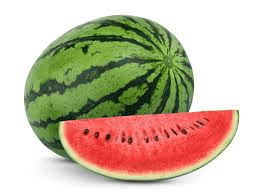Melon is a popular fruit enjoyed worldwide for its sweet, juicy flavor and high water content. Exporting melons requires careful attention to detail to ensure that the fruit remains fresh and high quality from the farm to the consumer. Processing, packaging, and exporting melons involves several steps that must be done carefully to meet international standards and consumer expectations.
The first step in processing melons for export is harvesting. Melons should be harvested when they reach their peak ripeness. This is usually determined by the fruit’s color, texture, and fragrance. The exact indicators can vary depending on the type of melon, such as watermelon, cantaloupe, or honeydew. Harvesting is usually done by hand, with workers using sharp knives to cut the melon from the vine. It’s important to handle the melons gently during harvesting to avoid bruising or damaging the fruit. Once harvested, the melons should be transported to the processing facility quickly to preserve their freshness.
At the processing facility, the first step is to clean the melons. They are usually washed with clean water to remove dirt, dust, and any pesticide residues. In some cases, a mild sanitizing solution may be used to further ensure the fruit’s cleanliness. After washing, the melons are inspected for quality. Any fruit that is overripe, underripe, or damaged is removed from the batch. The remaining melons are then sorted by size, weight, and appearance. Uniformity is important because it affects how the melons will be packaged and presented to the market.
For melons intended for fresh export, the next step is packaging. The melons are typically packed in strong, ventilated cartons that provide protection during transportation. The packaging is designed to minimize movement and prevent bruising. Each carton is labeled with important information, such as the country of origin, the type of melon, and any relevant certifications. It is also important to ensure that the packaging meets the importing country’s standards for fresh produce.
If the melons are to be processed further, such as for melon slices, juice, or other products, they undergo additional steps. For melon slices, the fruit is peeled, seeded, and cut into the desired shapes. The slices are then packed in containers designed to keep them fresh, such as plastic trays with clear lids or vacuum-sealed bags. Melon juice production involves crushing the fruit to extract the juice, which is then filtered and pasteurized to extend its shelf life. The juice is packed into sterilized containers, such as bottles or cartons, depending on the market’s requirements.
Exporting melons involves meeting international trade regulations and quality standards. This includes ensuring that the melons comply with the phytosanitary requirements of the importing country, which may involve inspections for pests and diseases. Exporters may need to obtain certifications like Global GAP (Good Agricultural Practices) to demonstrate that the melons were grown and handled according to international standards. Proper documentation, including the certificate of origin, packing list, and phytosanitary certificate, must be prepared to accompany the shipment.
Transportation is a critical aspect of exporting melons. Fresh melons are usually shipped by sea in refrigerated containers, also known as reefers, to maintain the temperature and humidity levels necessary to keep the fruit fresh. The ideal shipping temperature for most melons is between 7 and 10 degrees Celsius. This helps slow down the ripening process and prevent spoilage during transit. In some cases, air freight may be used for faster delivery, particularly for high-value markets where consumers expect premium quality fruit.
Once the melons arrive at the destination port, they go through customs clearance. This involves checking the documentation and inspecting the fruit to ensure it meets the importing country’s standards. If everything is in order, the shipment is cleared, and the melons can be distributed to retailers, wholesalers, or other buyers in the importing country. From there, the melons are typically sold in supermarkets, fruit markets, or other retail outlets where consumers can purchase them fresh.
In conclusion, processing, packaging, and exporting melons requires careful planning and execution at every stage. From the initial harvest to the final delivery to the consumer, each step is critical to maintaining the quality and freshness of the melons. By adhering to international standards and ensuring that all procedures are followed correctly, producers and exporters can successfully bring their melons to global markets. This not only satisfies consumer demand but also contributes to the economic success of the melon industry.
How to Process Melon for Exportation

1. Harvesting: Harvest melons when they are fully ripe. Look for signs such as a change in color, a sweet aroma, and a slight softness at the stem end. Use a sharp knife to cut the melons from the vine carefully, avoiding any damage.
2. Sorting: After harvesting, sort melons to separate those that are ripe and of good quality from those that are under-ripe or damaged. This ensures that only the best fruit is selected for export.
3. Washing: Wash the melons thoroughly under clean, running water to remove dirt, pesticides, and any residues. This step is crucial for maintaining hygiene and preparing the melons for further processing.
4. Drying: After washing, dry the melons using clean towels or air-dry them in a clean environment. Proper drying prevents the growth of mold and helps maintain the fruit’s quality during storage.
5. Cutting (if required): Depending on your export requirements, you may need to cut the melons into pieces or slices. Use clean, sharp knives and cutting boards to ensure uniformity and prevent contamination.
6. Removing Seeds (if required): If cutting the melons, remove the seeds and any inedible parts. This step ensures that the exported product is ready for consumption and improves its appeal.
7. Packaging: For whole melons, use protective materials such as foam nets or padding to prevent bruising during transport. For cut melons, use food-grade containers with airtight seals to maintain freshness.
8. Quality Control: Conduct a final quality check to ensure that all melons meet export standards. Check for uniformity, ripeness, and cleanliness. Discard any fruit that does not meet the required specifications.
9. Documentation: Prepare all necessary export documentation, including certificates of origin, quality certificates, and any other required paperwork. Proper documentation is essential for smooth customs clearance.
10. Storage: Store the processed melons in a cool, dry place until they are ready for export. Ensure that storage conditions are optimal to prevent spoilage and maintain quality.
Read Also: List of Diseases Ruminant Animals (Livestock) Get from Feeds and Water
How to Package Melon for Exportation

1. Selecting Packaging Material: Choose packaging materials that are sturdy, moisture-resistant, and designed to protect melons during transport. Options include corrugated cardboard boxes, plastic crates, or wooden pallets.
2. Wrapping: Wrap each melon individually with protective materials such as foam netting or bubble wrap. This helps prevent bruising and damage during handling and transportation.
3. Packing: Place the wrapped melons into boxes or crates, ensuring that they are packed snugly but not too tightly. Use dividers or padding to prevent movement and reduce the risk of damage.
4. Labeling: Clearly label each package with important information, including the product name, quantity, origin, and any required certification details. Accurate labeling helps in identifying the product and complying with regulations.
5. Sealing: Seal all packages securely using adhesive tape or other sealing methods. Ensure that the packages are well-sealed to protect the melons from external elements and maintain freshness.
6. Palletizing: For bulk shipments, arrange the boxes or crates on pallets. Secure the pallets with stretch film or straps to ensure stability and prevent shifting during transit.
7. Handling: Handle packages with care to avoid damaging the melons. Use appropriate equipment, such as forklifts or pallet jacks, to move the packages and avoid overloading.
8. Storage Before Shipping: Store the packed melons in a cool, dry area before shipping. Maintain proper temperature and humidity levels to preserve the quality of the fruit.
9. Inspection: Perform a final inspection of the packages to ensure they are in good condition, properly sealed, and labeled correctly. Address any issues before shipment.
10. Documentation: Include all necessary export documents with the shipment, such as invoices, packing lists, and certificates. Proper documentation facilitates smooth customs clearance and compliance.
How to Export Melon for Profits
1. Market Research: Conduct thorough research to identify potential markets and understand demand for melons. Analyze market trends, pricing, and consumer preferences in target countries.
2. Establish Export Channels: Build relationships with reliable export partners, including freight forwarders, distributors, and shipping agents. Having a strong network helps streamline the export process and reach buyers.
3. Pricing Strategy: Develop a competitive pricing strategy based on your market research and production costs. Consider factors such as shipping costs, tariffs, and currency fluctuations when setting prices.
4. Quality Assurance: Maintain high quality standards for your melons to meet international expectations. Implement quality control measures throughout processing and packaging to ensure product consistency.
5. Compliance with Regulations: Ensure compliance with export regulations and standards of the destination country. Obtain necessary permits, certifications, and adhere to phytosanitary requirements.
6. Marketing and Promotion: Create marketing materials and strategies to promote your melons in target markets. Utilize online platforms, trade shows, and industry events to showcase your product and attract buyers.
7. Logistics Management: Plan and manage logistics effectively to ensure timely delivery of your melons. Coordinate with shipping companies to arrange transportation and monitor the shipment throughout its journey.
8. Documentation Management: Prepare and manage all export documentation accurately. This includes commercial invoices, packing lists, certificates of origin, and other required paperwork.
9. Customer Service: Provide excellent customer service to build strong relationships with buyers. Address any queries or concerns promptly and maintain open communication to foster trust and satisfaction.
10. Monitor and Adapt: Continuously monitor market trends, customer feedback, and your export performance. Be prepared to adapt your strategies based on changing market conditions and opportunities for growth.
Read Also: African Swine Fever: Description, Damages Caused, Control and Preventive Measures
Frequently Asked Questions (FAQ’s) About Melon

1. What is the best time to harvest melons?
Melons should be harvested when they are fully ripe, indicated by a change in color, a sweet aroma, and a slight softness at the stem end. Proper harvesting ensures the best flavor and quality.
2. How should melons be stored before export?
Store melons in a cool, dry place to maintain freshness. Avoid exposing them to high temperatures or humidity, which can lead to spoilage.
3. What are the common types of melon exported?
Common types of melons exported include cantaloupe, honeydew, and watermelon. Each type may have specific requirements for processing and packaging.
4. How can I ensure the quality of exported melons?
Ensure quality by selecting ripe and healthy melons, following proper processing and packaging procedures, and adhering to international quality standards.
5. What packaging materials are best for melons?
Use sturdy, moisture-resistant materials such as corrugated cardboard boxes, plastic crates, or wooden pallets. Protective wrapping like foam netting can also prevent damage.
6. How long can melons be stored before export?
Fresh melons should be exported within a few days of harvest to ensure optimal freshness. Proper storage conditions help extend shelf life.
7. What certifications are needed for exporting melons?
Certifications such as GlobalGAP, Organic, or Fairtrade may be required or beneficial. Ensure you have the necessary phytosanitary certificates and export permits for compliance.
8. How do I handle melons during processing?
Handle melons gently to avoid bruising or damage. Use clean equipment and follow hygiene practices to maintain product quality.
9. What are the common challenges in melon exportation?
Common challenges include managing quality control, complying with international regulations, and handling logistics. Address these challenges through careful planning and coordination.
10. How can I improve profitability in melon exportation?
Improve profitability by optimizing production processes, targeting high-demand markets, establishing strong buyer relationships, and continuously monitoring market trends.
Read Also: Everything You Need to Know About Moen Garbage Disposal

